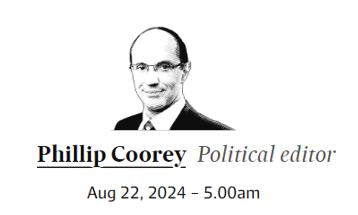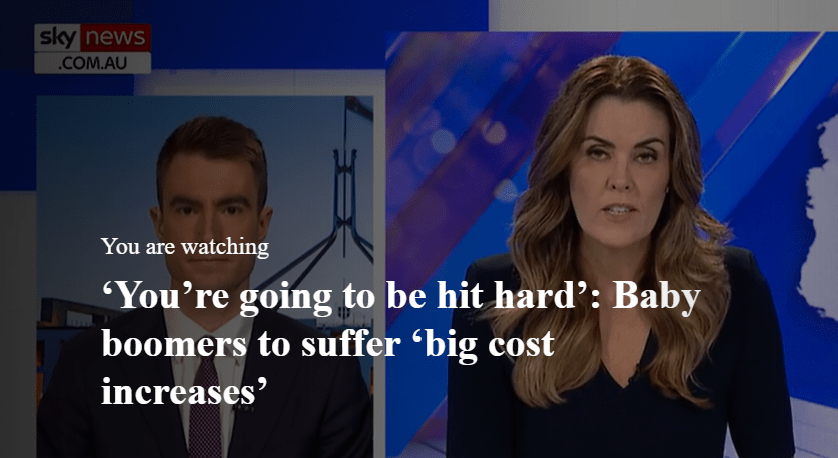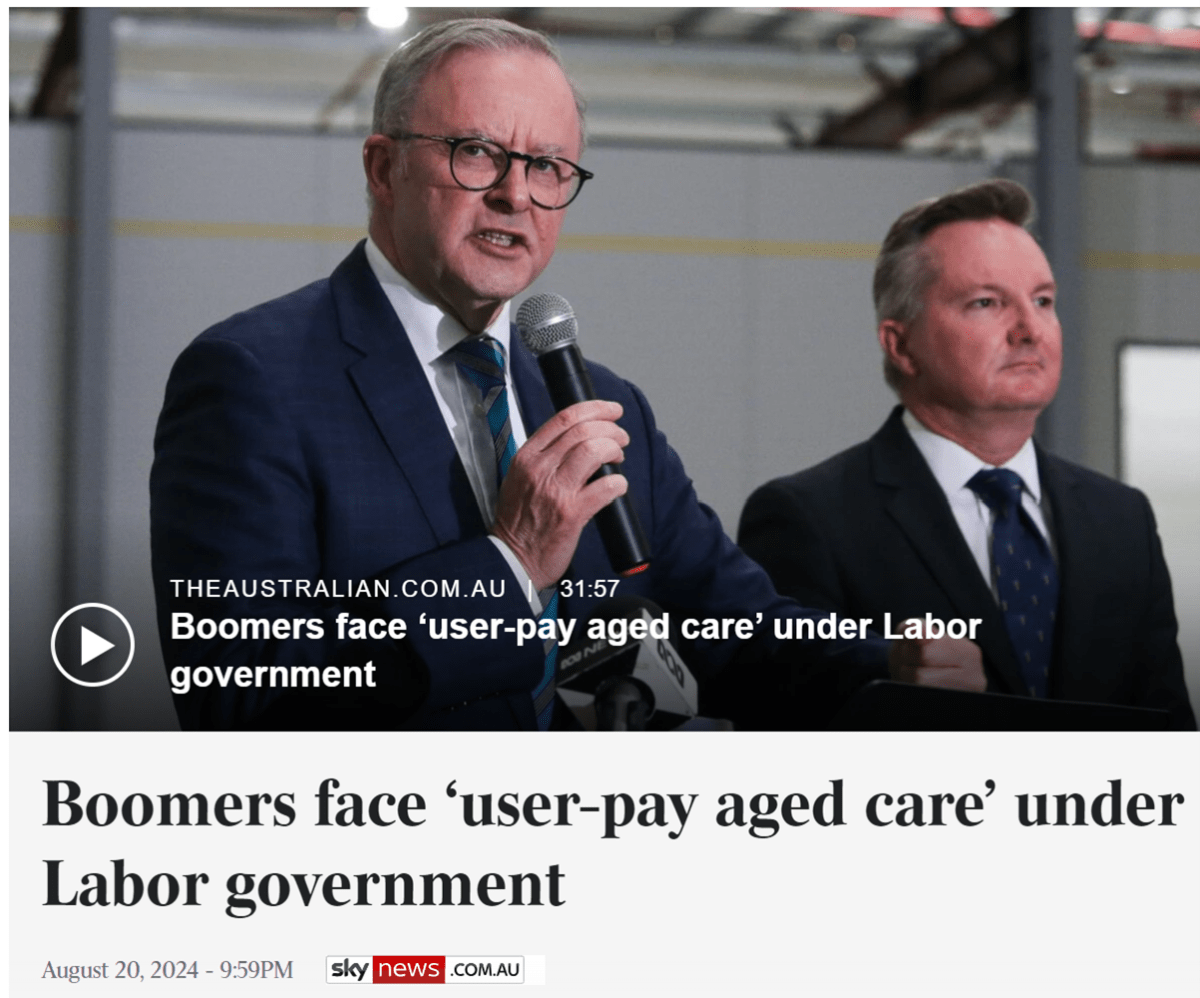September looking more likely for Taskforce recommendations – and why
After nine months of moving at a snail’s pace, finalising the Government and the Opposition’s taskforce position is an hourly process, but likely not happening today.

After nine months of moving at a snail’s pace, finalising the Government and the Opposition’s Taskforce position is an hourly process, but likely not happening today.
Phillip Coorey, Political Editor of the Financial Review, appears to be the best informed of back corridor conversations, and in a 5am report published online today, he is indicating that getting the Taskforce recommendations, and thus the aged care legislation into Parliament today, will be hard. September is far more likely. His article is concise and very informative, and so to assist you, our readers, we take the unusual step of reproducing it in full below, with apologies to the Fin Review. (And here is the link to read it online here.)
Meanwhile, Sky News is going hard to scare the public, which is what both parties (and the sector) don’t want. See the links at the bottom of this article.
In summary, September is significantly better than after the next election, which is what many commentators have been predicting. Co-contribution for non-care costs looks like it will get through. This means operators will have fresh revenue to take them into the black, and consequently they can have optimism in reinvesting in workforce and beds. For the first time in six years.

The major parties have agreed in-principle to a new aged care funding model after the Albanese government accepted another demand from the Coalition to exempt people on home care waiting lists from the new user-pays fee structure.
They will join existing nursing home residents who, under the original proposal, were already exempt from the new fee structure that will apply to all others entering the aged care system, including pensioners and self-funded retirees, not just the so-called “wealthy”. Industry sources familiar with the negotiations between the major parties said the decision to grandfather those on the home care waiting list was known as “the Dutton demand”. That, plus lowering new proposed lifetime contribution caps for home care and residential care, and abandoning plans to impose criminal penalties on nursing home directors whose facilities breach quality standards, were also demanded by the opposition in return for its support. On Wednesday, sources on both sides confirmed in-principle agreement had been reached on chapter four of a new Aged Care Act, which contains the funding reforms under which those entering care will have to pay “a bit more” for their care while home care recipients will pay more for services.
Fears over political impact
Those with the greatest means, the family home excluded, will pay larger contributions, but everyone will have to chip in a bit more.
But with both sides worried about the political impact, even though there will be bipartisan support. It remained unclear when the government would introduce the legislation. Both sides on Wednesday were at pains not to jeopardise the goodwill that underpinned the negotiations, which began in March. The Coalition leadership appeared mindful of the potential for unrest on the backbench and said party processes had to be followed before it gave a final commitment. It is understood the aged care reforms were discussed on Wednesday afternoon by the opposition’s shadow expenditure review committee, but with parliament not due to sit again after this week until September 9, the legislation may not be put to the Coalition backbench for approval until the party room next meets on September 10. “Good faith negotiations and internal processes continue,” a Coalition spokesman said.
Long road to reform
With aged care one of the five fastest growing imposts on the federal budget, and with the population growing older, the government launched the reform process in June last year with a view to making those with the means pay more for their care.
The government proposed lifting the lifetime contributions cap for residential care from the current level of $76,096 to $190,000, and abolishing it altogether for home care. But the Coalition baulked, saying this was too high, so government agreed to a single cap for home care and aged care at a level much lower than $190,000. The cap is the maximum a person can pay for their aged care over a lifetime and applies only to direct care costs. It does not include extras such as top-ups for better services. The care fee is means-tested using a combined income and assets test. However, the value of the family home up to only about $200,000 is included in the means test and the government long ago ruled out increasing that to eradicate the spectre of a death tax. Nonetheless, both sides are nervous about political blowback: Labor fears a backlash from those on the aged pension and the Coalition is fearful of the self-funded retirees. When Aged Care Minister Anika Wells launched the process last year, Opposition Leader Peter Dutton pledged bipartisan support so long as the solution did not involve a new tax or anything resembling a death tax.
Sky News goes hard against Labor and taskforce
Below are two clips from the last two days on Sky News, the media most politicians (backbenchers) track.

Watch the video here.

Read the article here.





